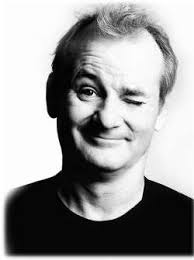*Posted July 31, 2008*
My mom of all people showed me this article written by Phil Taylor of Sports Illustrated.I found it to be a pretty fun and accurate read.Hope you enjoy.
Cool, the onetime giant of sports culture that had long been in declining health, died in seclusion last month. In a measure of how forgotten Cool had become, the moment of its passing went largely unnoticed even though the event was witnessed by millions on television, shortly after the Boston Celtics won the NBA championship by defeating the Los Angeles Lakers. In the ensuing celebration Celtics star Kevin Garnett was asked how he felt about winning the first title of his 13-year career. He threw his head back and bellowed, "Anything is possible!" as though he had just accomplished something previously thought to be beyond human capability, like walking on the sun or deciphering the plot of Lost. With Garnett's scream, Cool took its dying breath.
Authorities say that Garnett will not be held responsible for the demise of Cool, ruling that he was no more culpable than thousands of other modern-day athletes who have an overwhelming need for self-congratulation and a tendency to overdramatize. Those athletes avoided Cool like a subpoena during its final years, instead embracing midair chest bumps, primal yells and the kind of elaborate, multistep hand jive that grade-school girls do on playgrounds.
Cool was on a respirator as the end neared, its breathing more shallow with every poststrikeout fist pump by Joba Chamberlain, every dunk-and-sneer from Vince Carter and every one-act play performed by Chad Johnson after a touchdown catch. In its weakened state, it was hard to believe that Cool once walked with kings, that Michael Jordan, Joe Montana, Julius Erving, Bjorn Borg and Walt Frazier were never caught without Cool, in competition or away from it. Cool not only added to their mystique but also served a practical purpose. "I always felt that [Cool] gave me an advantage," Frazier says. "It's like in poker, if the other players can't read you, it puts that uncertainty in their minds and that puts you in control."
Its age was hard to pin down, but Cool is believed to have been born in the late 1960s, around the time Joe Namath began wearing full-length fur coats and dating models (no one said Cool couldn't be fun) and John Carlos and Tommie Smith stood silent and stoic on the Olympic medal podium in Mexico City, their leather-gloved fists raised in a human rights salute (no one said Cool couldn't be serious).
Stardom quickly followed for Cool. Kids aspired to it. Men tried to embody it. Women were attracted to it. Cool reached out to established coaches, giving their gentlemanly, controlled personas a new cachet. As Tom Landry walked the Dallas Cowboys' sideline wearing a suit, a crisp fedora and an unchanging expression, Cool was on his shoulder. It was there, too, beside UCLA's John Wooden as he directed his nearly flawless Bruins -- perhaps the coolest crew ever -- without rising from his courtside seat. It seemed not so much that winners were cool, but that Cool created winners.
Only in retrospect is it clear when Cool began to hit hard times. In the opener of the 1979–80 NBA season, the Lakers beat the San Diego Clippers on Kareem Abdul-Jabbar's buzzer-beating hook shot. Abdul-Jabbar was the kind of Cool customer who would hit a game-winner, stroll off the court and go put on a Miles Davis album. But this was the pro debut for Magic Johnson, the league's No. 1 pick. Magic jumped on Abdul-Jabbar and wrapped him in a bear hug, surprising the captain but charming the fans with his joy. No one knew it then, but Cool was doomed.
Though Magic's jubilation was genuine, over time fans and players alike became so hooked on open displays of emotion that they didn't care if those displays were real or not. Partly because of the huge salaries that athletes were making, the public wanted to see players in agony or ecstasy, as proof that they cared about more than the paycheck. The athlete who preened for the cameras and pounded his chest was assumed to have more passion than the one who kept a lid on his emotions. Cool became confused with Bland and Uninterested. Now it's not the player who bashes in the occasional watercooler who's criticized, it's the one who doesn't.
Like most stars of another era, Cool had several aborted comebacks, with the occasional athlete attempting to revive it. Tom Brady, Mariano Rivera and Ichiro Suzuki were among the last advocates of Cool, but few of their colleagues followed suit. Cool's condition was terminal.




No comments:
Post a Comment